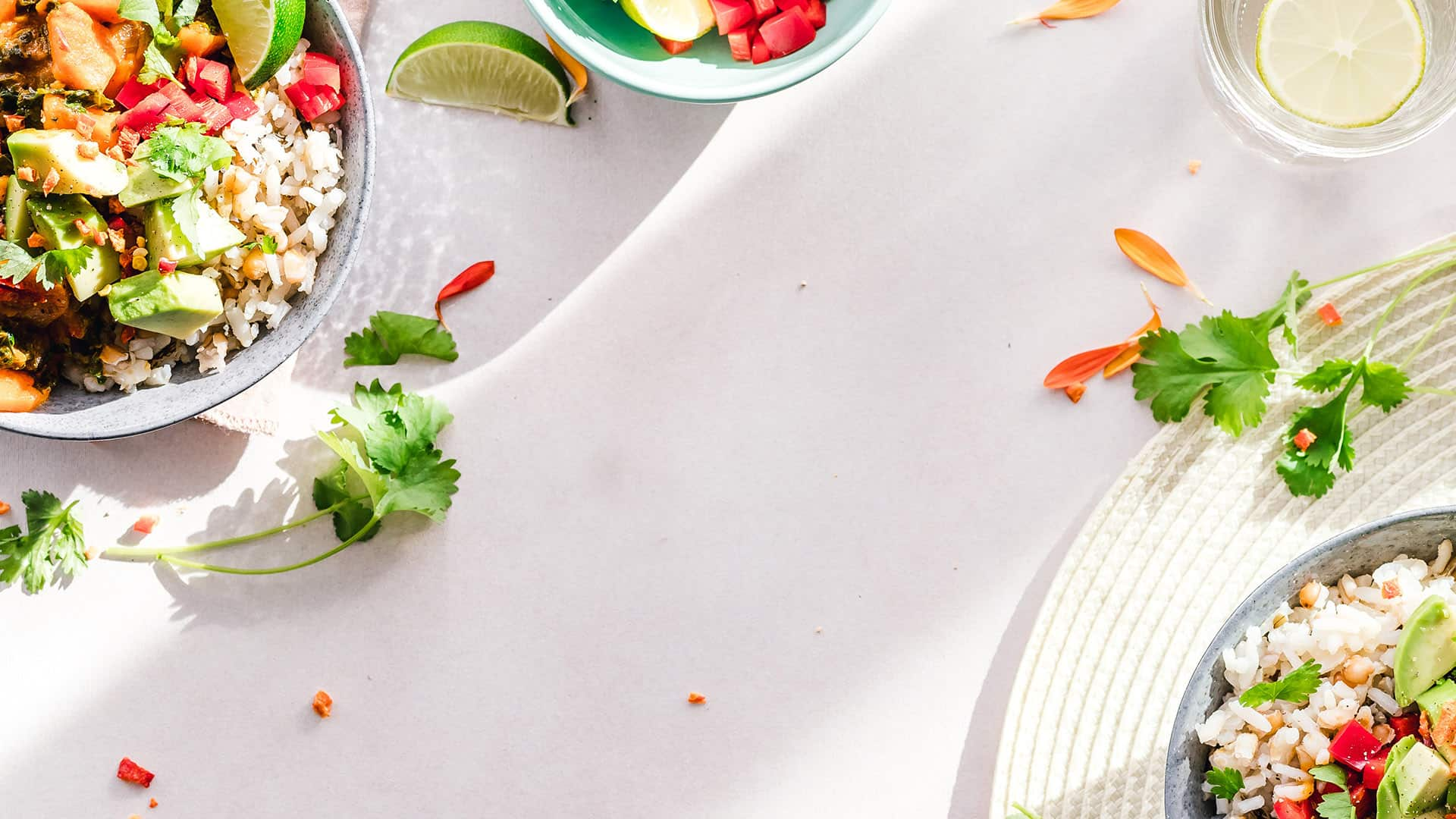
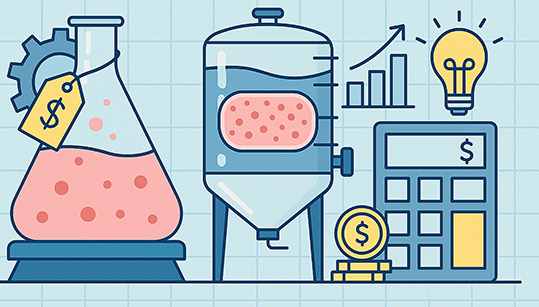
Ones to Watch: The cost equation
As the cultivated meat sector shifts from hype to hard truths, Nick Bradley speaks with the founders, scientists, researchers and engineers about designing for affordability — and turning cost from a constraint into a catalyst for scale
Twelve years ago, a single cell-cultivated burger sizzled its way into headlines and history. Pan-fried in a London studio kitchen, it promised a future of real meat without the animals. But as the camera crews packed up, a harder question emerged: not can we make cultivated meat, but can we make it affordable, scalable, and repeatable?
That’s the real frontier now – and this feature is a dispatch from the frontlines of that shift. The cultivated meat industry has outgrown its proof-of-concept phase. What matters today isn’t novelty, but viability. Not singular tastings, but unit economics.
From hype to hardware
Across 11 interviews with scientists, founders, and systems thinkers, a new picture comes into focus: one of quiet pragmatism replacing breathless hype. These voices aren’t chasing viral headlines – they’re wrestling with cost curves, infrastructure constraints, and manufacturing logic. Some are stripping back media formulations to the essentials. Others are throwing out pharma-style bioreactors in favor of fit-for-purpose food-grade systems. A few are redesigning cell lines from the genome up. Almost all are looking beyond vertical integration and toward modular, collaborative models.
If the first wave of cultivated meat was built on scientific breakthroughs, the next will be shaped by engineering discipline, economic realism, and industrial imagination. This is where cost becomes the design principle – not the limitation. Where the question isn’t whether consumers want cultivated meat, but whether we can build systems that make it accessible, delicious, and competitive.
As one founder over the following pages put it, “We don’t have another decade to fine-tune things in the lab. It’s time to prioritize progress over perfection.”
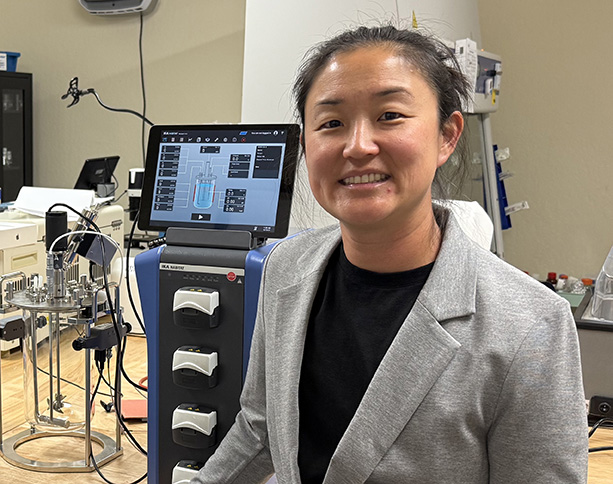
Novel Farms
In a world of glossy pitch decks and biotech moonshots, Michelle Lu stands out by asking one deceptively simple question. What if cultivated meat wasn’t overengineered? As Founder & CEO of Novel Farms, Lu is betting that the future of cultivated protein will be shaped less by exotic breakthroughs and more by a clear-eyed recalibration of cost, complexity, and the very definition of value.
“We’re really just trying to take the simplest, most efficient path to produce the volumes we need at the lowest possible cost,” she begins. “That’s the only way cultivated meat scales.”

The elegance of that sentence belies the industrial and scientific rethink it demands. At Novel Farms, cost isn’t a constraint to work around – it’s the design principle. From food-grade amino acids to flavor-tuned media, Lu is building a system to move cultivated meat from niche idea to functional commodity.
“We’re focused on reducing the cost of cultivated meat production by using simple, food-grade inputs and leveraging existing infrastructure,” she explains. The strategy steers clear of the capital-heavy approach taken by early pioneers that built pharma-style facilities with high-spec GMP environments and single-use plastics. Instead, Novel Farms follows the logic of the food industry – clean, but not clinical.
And it’s not just ideology. It’s economics. “Food is a commodity – it’s supposed to be cheap,” Lu says. “Animals convert free inputs like grass into thousands of pounds of meat. If we want to compete, we can’t rely on ultra-purified carbon sources or amino acids. We have to work with cruder, cheaper raw materials.”
That’s more than a challenge – it’s an opportunity. Using hydrolysates from barley, rice, and even algae, Novel Farms is experimenting with how nutrient density and amino acid balance can be achieved without biotech’s usual price tag.
And growth factors? “They’re expensive, but used in such small quantities that they’re not the major driver. Nutrients are,” she emphasizes. “You’re feeding cells. They’re going to eat. That’s where the costs stack up.”
While most alternative protein startups chase texture or mimicry, Lu zeroes in on something deeper: flavor as a function of biology. “The flavor profile of cultivated meat can be influenced by what you feed the cells,” she says. That opens up the possibility of tuning media inputs not just for cost, but for character – developing high-margin, flavor-dense ingredients rather than commodity meat replicas.
“There are three pillars in food: cost, nutrition, and flavor,” she continues. “Plant proteins can hit the first two. But flavor? That’s still an edge cultivated meat can have – if we do it right.”
Flavor by algorithm
That’s where Novel Farms’ machine learning platform comes in, mapping the complex metabolic needs of animal cells and optimizing how low-cost ingredients can be converted into key flavors. It’s a kind of flavor engineering that feels more like perfumery than protein manufacturing.
Cost-saving at Novel Farms isn’t limited to what happens inside the bioreactor. Downstream processing – often the overlooked side of biomanufacturing – is seen as ripe for innovation. “We lose yield at every wash step, every centrifuge cycle,” Lu notes. “So we’re exploring how to recover and valorize spent media, wash solutions, even byproducts such as lactate and ammonium.”
On that, ammonium is widely used as a nitrogen source in agriculture. “Almost everything animal cells produce has potential value,” Lu says. The longer-term goal is a closed-loop system where even waste streams pull their weight.
Food is a commodity – it’s supposed to be cheap. If we want to compete, we can’t rely on ultra-purified inputs. We have to work with cruder, cheaper raw materials
While some companies double down on vertical integration, Lu takes a different approach. “Partnering with CDMOs and commercial kitchens lets us de-risk our scaleup without spending tens of millions on infrastructure. Why overcomplicate it?”
For now, Novel Farms is producing cultivated chicken for pet food and actively seeking product testers. “We’re now at the point where we can produce meaningful amounts of cultivated chicken ingredient,” Lu says. “And early data suggests pets may actually prefer it over conventional chicken. That’s incredibly encouraging.”
On the human food side, a tasting event is on the horizon. But Lu is cautious, avoiding the overpromises that have bruised the sector. “Right now, we’d honestly be happy just to find our first customers,” she says.
No buzzwords or bold timelines – just data, discipline, and a techno-economic analysis quietly guiding the work. “You’ll always be paying for raw inputs – unlike CapEx, which you can finance. Operational costs are what really add up,” Lu explains. “That’s why we ran a TEA early on. It told us where to focus, what to avoid, and how to build something viable.”
In a sector often driven by ambition, Lu brings focus – not the kind that grabs headlines, but the kind that reshapes systems. “If you’re building a technology you hope to commercialize, start with a techno-economic analysis,” she says. “It helps you understand what’s driving your costs – and where to put your energy.”

Magic Valley
For Paul Bevan, Founder & CEO of Magic Valley, the future of meat isn’t about convincing people to give it up – it’s about offering it without the ethical and environmental cost. “I started the company because I believe we can remove animals from the food system without asking people to give up meat,” he says. “Cultivated meat lets us do that. It’s real meat, just made without the cruelty or climate impact.”
From its base in Australia, Magic Valley is building a quietly pragmatic cultivated meat company. Instead of chasing flashy prototypes, it’s focused on delivering real products with viable unit economics – with induced pluripotent stem cells (iPSCs) at the core of that approach.
Unlike primary or immortalized cells that require ongoing animal harvesting or genetic tweaks, iPSCs offer a cleaner solution. “We take a harmless sample from a living animal and reprogram those cells to become any cell type – muscle, fat, and so on,” says Bevan. “These cells replicate indefinitely, which dramatically lowers long-term cost and complexity.”

That focus on scalable, ethical design shapes Magic Valley’s entire process. The company avoids fetal bovine serum, animal scaffolds, and genetic modification. Its custom serum-free media is built to support long-term cell growth without the ethical or regulatory issues tied to animal inputs.“We’ve been animal component-free from inception, including during R&D,” Bevan points out. “That makes our process not only more ethical, but also simpler to scale and easier to navigate from a regulatory standpoint.”
Structure without scaffolds
Simplicity runs through Magic Valley’s approach. While many rely on scaffold technologies for structure, the company’s iPSCs grow in suspension, removing the need for added architecture. That choice cuts complexity and eliminates a major cost layer in biomanufacturing – a clear shift from more scaffold-dependent models that face scaleup challenges.
Media, a big cost driver in cultivated meat, has also been streamlined. “We focused on simplifying and optimizing the media,” explains Bevan. “By removing animal inputs and unnecessary complexity, we’ve already reduced costs significantly – and there’s still room to go,” he adds.
Magic Valley is testing partial media reuse, aiming to maintain cell performance while cutting input costs and reducing waste. Although tricky to optimize, even small gains here can make a difference at scale.
Bevan sees parts of the cultivated meat sector as sidetracked by hype, prioritizing consumer launches over viable unit economics. Magic Valley is taking a different path, focusing on a B2B model. Instead of building its own retail brand, it’s partnering with manufacturers, quick-service chains, and established meat companies with existing supply chains and consumer trust.“B2B lets us scale faster and smarter,” Bevan remarks. “It gives us the flexibility to white-label, co-brand, or adapt the format to a partner’s needs. That kind of optionality allows us to reduce risk while expanding our reach.”
He’s also candid about the limitations of sustainability messaging when it comes to consumer decision-making. “Sustainability and ethics get people interested, but taste, price, and availability are what drive repeat purchase,” he observes. “We need to meet people where they are.”
That means addressing the biggest barrier to mass adoption: cost. Magic Valley is aiming to reach parity with premium conventional meat within the next three to five years, and eventually outperform it. Bevan believes that this is achievable if progress continues in both biological development and bioprocess engineering. “It’s not just about tweaking the biology – it’s about building the factory,” he stresses. “Bioprocessing is where the real cost savings will come.”
What matters is whether you can deliver on cost, scale, and taste – and that’s where we’re focused
As with many cultivated meat companies, access to large-scale bioreactors remains a key bottleneck. In fact, Bevan identifies it as one of the major constraints facing the entire sector. “It slows everything from R&D to commercial production,” he notes. Overcoming it will therefore be essential to making cultivated meat both available and affordable.
Magic Valley is already scaling production and preparing regulatory submissions. “We’re producing meaningful quantities of cultivated meat, and we’re now looking for strategic partners to test and apply it,” Bevan shares.
In a market where much attention has focused on the faltering momentum of plant-based alternatives, Bevan remains quietly confident about cultivated meat’s trajectory. “The so-called death of alt protein is overblown,” he reflects. “The hype cycle is normal for any emerging technology. What matters is whether you can deliver on cost, scale, and taste – and that’s where we’re focused.”
Magic Valley isn’t aiming to be the loudest voice in the room. Instead, it is building a system that can stand up to scrutiny – scientific, economic, and ethical – without relying on elaborate narratives or conceptual detours. For Bevan, the core argument for cultivated meat is disarmingly simple. “This isn’t a substitute. It’s an upgrade.”
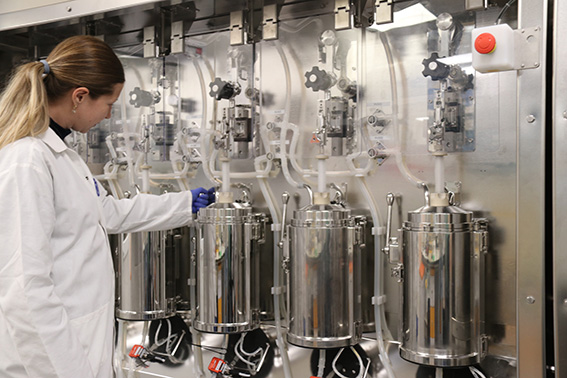
Ever After Foods
Eyal Rosenthal has seen the cultivated meat hype cycle from the inside. Before launching Ever After Foods, he led venture capital investments in food tech, advised governments, and chaired the Israeli Food Tech incubator Fresh Start. And in all that time, one question kept nagging at him: why were so many cultivated meat companies trying to grow food in systems built for pharmaceuticals?
“As an investor, I evaluated dozens of cultivated meat startups,” he recalls. “The science was exciting. But the scalability wasn’t there. Even if we solve cell lines and media, it won’t matter unless we solve cost and scale.”

That conviction became the foundation for Ever After Foods, the B2B company based in Israel that’s not chasing the next novel product but rather designing the industrial tools to make cultivated meat commercially viable. “We’re here to enable the entire industry to scale,” Rosenthal explains. “By giving partners the technology that makes cultivated meat affordable, viable, and real.”
Central to Ever After Foods’ strategy is its proprietary EPB technology – the edible-packed bed (EPB) bioreactor. Unlike stirred-tank reactors (STRs) – which were adapted from pharma and create turbulent conditions that damage cells – the EPB system is designed from the start with food in mind. “Stirred tanks were made for making things such as insulin,” Rosenthal notes. “But meat isn’t insulin. It has structure – muscle, fat, connective tissue. STRs tear cells apart. What you get is more of a slurry than actual meat.”
The EPB flips this approach. It uses a plant-based scaffold with a high surface area to support cell growth in three dimensions. Rather than stirring, the system circulates nutrients using gentle vibration. This preserves the integrity of the cells, allowing them to develop into actual tissues rather than fragments.
The result isn’t just biological – it’s economic. “Your bioreactor defines everything – yield, media cost, footprint, CapEx, throughput,” Rosenthal emphasizes. “We’ve engineered this system so our partners can produce more meat in less space, with less energy, and at a much lower cost.”
Efficiency before scale
One of Ever After Foods’ most compelling metrics is biomass yield. While traditional systems achieve 2-4% yield from working volume, the EPB platform delivers up to 68%. That 20-fold increase dramatically improves cost-per-kilo and reduces the need for megastructures.
“There’s so much talk about building 10,000-liter facilities,” Rosenthal muses, “but if your system is only 2% efficient, you’re just scaling inefficiency. We believe yield is the heartbeat of the business. When you get yield right, everything else starts to align.”
And with yield comes flexibility. Ever After Foods backs modular, distributed systems that scale gradually, avoiding nine-figure investments in large facilities. “Go modular. Go distributed,” Rosenthal says. “Start small, reduce risk, and scale as demand grows.”
The system is also designed with retrofitting in mind, enabling integration into existing cleanroom or food-safe infrastructure rather than requiring all-new builds. That adaptability could be a key accelerator for companies aiming to test or launch without committing to greenfield construction.
While bioreactor design gets much of the spotlight, media optimization remains one of the most critical cost levers in cultivated meat. Here, too, Ever After Foods’ EPB system offers unique advantages.
Because the media is physically separated from the cell growth zone, it can be sterilized, monitored, and recycled more precisely – without the use of retention devices that introduce risk, limit scale, and increase costs. “Our media is cell-free,” Rosenthal explains. “That allows us to reuse it in real time, with no damage to cell or media quality.”
Beyond recycling, the system is also engineered to reduce media volume from the outset. “We operate with 20 times less working volume,” he says. “Cells sense concentrations, not volume – so we can use fewer costly ingredients and still achieve the same results.”
Scale without efficiency is just expensive failure. We believe yield is the heartbeat of the business
Rosenthal reports a media cost reduction of at least 80%, without compromising on growth or cell health. And critically, all media used is now fully defined and animal-free, further reducing regulatory friction and improving performance. “Our growth rates actually improved after switching away from animal components,” he adds.
Collaborating with the Bühler Group and with pilots already underway, Ever After Foods is now scaling its EPB platform to commercial readiness. The next major milestone is a production system capable of producing 400kg of cultivated meat, which the company sees as a major springboard for partnerships and broader industry deployment.
But Rosenthal is quick to point out that while the industry has matured, the real work is only beginning. “We’re past the hype phase,” he says. “The companies that solve cost and scale now will define the future of food.”
When asked what one thing he’d fix across the sector, he doesn’t point to technology but to the ecosystem around it. “More government support. More transparency. More collaboration. That’s how we move forward.”
Ever After Foods isn’t interested in being the face of cultivated meat. Instead, it’s building the platform that might just power the entire field. “We’re not chasing the trend,” Rosenthal concludes. “We’re building the foundation.”
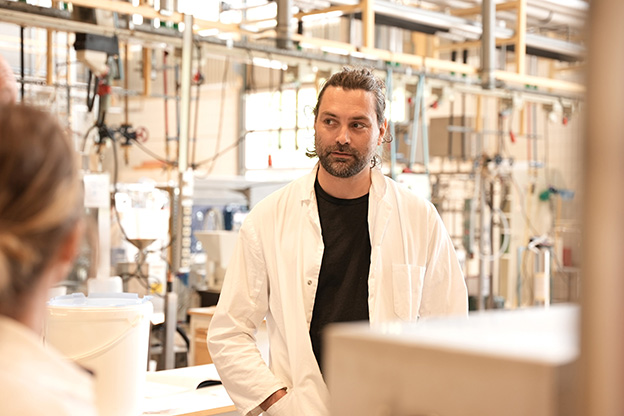
Peterson
Jacob Schaldemose Peterson isn’t trying to build another cultivated meat lab – he’s building a business. “At Re:meat, we’re simplifying what is typically a very complex industry,” insists the Swedish company’s CEO and Co-founder. “While many are replicating pharmaceutical approaches with pharma-grade inputs and equipment, we’ve taken a different path. We’re mirroring the process of brewing beer.”
That may sound unconventional in a field dominated by high-tech bioreactors, but Peterson is clear: it’s not about cutting corners, it’s about scaling sensibly. “Our team has deep roots in the global brewing industry,” he says, “and we’re applying that knowledge to cultivated meat.”

The result is Re:meat’s ‘foodBRIC’ – a modular, turnkey platform to help food and meat companies enter cultivated meat or precision fermentation without the usual cost and complexity. “We’re not trying to be another full-stack meat company,” Peterson adds. “We’re enabling real food players to do what they do best – at lower cost and with faster time to market.”
Peterson’s entry into the space came from a place of both curiosity and concern. “Cultivated meat has some of the greatest potential to make a meaningful difference,” he believes. “But as I spoke with founders around the world, it became clear that the industry was heavily R&D-focused. What was missing was expertise in food production, industrial upscaling, and commercialization.”
That experience – paired with co-founder Gittan Schiöld’s background – formed the basis of Re:meat’s operating philosophy: scale or bust. “If it can’t scale, it doesn’t matter,” Peterson says. “We’ve had a decade of brilliant lab work. Now we need to get out of the lab and build systems that can actually feed people.”
One of Re:meat’s early decisions was to drop pharmaceutical standards that don’t fit food manufacturing. “We need to eliminate unnecessary engineering standards and documentation requirements that are holdovers from pharma,” Peterson notes. “That alone can dramatically lower costs.”
Instead, the company focuses on food-grade materials, processes, and infrastructure – and urges the industry to do the same. “We can’t afford to aim for perfect anymore,” he adds. “It’s time to prioritize progress.”
That pragmatism applies to the product, too. While many in the space chase exact replicas of conventional meat, Peterson questions whether that’s the right place to start. “Do we really need to replicate a steak right now?” he asks. “Or should we be thinking about hybrid products, pet food, or other formats that are easier
to commercialize?”
The real opportunity, Peterson argues, is in aligning production with market demand – and doing it collaboratively. “If we’re not matching scale with real commercial opportunity, we’re just building expensive systems with no outlet,” he says.
To address this, Re:meat has launched ‘Pioneer Agreements’ to bring major food companies into the development process. “It’s not about equity – it’s about revenue and co-creation,” Peterson explains. “They get early access, we get a committed partner, and together we prototype and explore how it fits their portfolio.”
Breaking the silo mindset
Peterson is very vocal about a common industry challenge: too many companies tackling the same problems in isolation. “We need to move beyond the full-stack mindset,” he says. “It made sense early on, but now that we have specialists in media, cell lines, and bioreactors, it’s time to reconnect the value chain.”
We don’t have another decade to keep fine-tuning things in the lab. It’s time to prioritize progress over perfection
For Re:meat, that means building a platform that others can plug into. “No one in the food industry wants to cobble together three or four tech providers,” Peterson notes. “They want something integrated and reliable.”
He envisions a future of JVs and aligned go-to-market strategies, where companies offer cohesive, revenue-ready solutions. “We need to stop building puzzle pieces and start selling the finished picture.”
Despite lingering hesitation from traditional meat companies, Peterson thinks the tide is turning. “There’s already strong consumer interest,” he says, citing numerous global surveys where cultivated meat outperforms alternatives such as insects. “The challenge is showing ‘Big Food’ that this is real – and ready.”
To help make that case, Re:meat is launching a food-grade pilot facility in November. “It’s designed to invite others in,” Peterson says. “A space where companies can test their media, cell lines, or fermentation processes in a scalable, cost-effective system.”
That openness reflects a broader view. “We’ve had the conversations. We’ve built the networks. Now it’s time to get hands-on and work together.”
Looking ahead, he remains grounded. “We need to pick a real problem, solve it, and link up with others bringing complementary technologies,” he concludes. “That’s how we avoid silos and build something that lasts.”
%20copy.jpg)
Cellular Agriculture Ltd
Cultivated meat is a bold innovation, offering a sustainable and secure alternative to traditional food production by growing edible muscle tissue from animal cells. But a pressing challenge remains: can it scale affordably?
Vipul Jain, Business Development Manager at Cellular Agriculture Ltd, thinks it can – if the industry moves beyond retrofitted tools. “Most bioreactors in use today are retrofitted from pharma or fermentation,” he says. “They were never designed for cultivated food. It’s time to stop adapting and start building.”
%20copy.jpg)
Jain brings more than a decade of pharmaceutical experience to the field, where he led commercial launches of breakthrough therapies. “This is a rare chance to apply the same rigor and purpose to one of the world’s most pressing challenges – how we feed a growing population sustainably,” he says.
At Cellular Agriculture, Jain is driving scalable, cost-effective solutions, centered on a next-gen hollow fiber membrane bioreactor inspired by nature’s vascular systems. In this design, cells grow in the extra-capillary space while media flows through the hollow fiber lumens. This separation allows for higher flow rates without increasing
shear stress, ensuring consistent delivery of nutrients and oxygen to each cell.
For muscle cells – which need scaffolds to grow – the hollow fibers double as attachment surfaces and nutrient channels, mimicking blood vessels. This boosts cell density and cuts media use – key to reducing costs. “It’s not just an improvement,” believes Jain. “It’s a rethink. A system built from the ground up for cultivated meat.”
Cultivated meat has long relied on pharmaceutical bioprocessing, with batch-based, suspension-oriented systems. But this, Jain argues, is a key issue. “You end up with high capital and operating costs as the equipment isn’t optimized for the biology of animal cells or the needs of a food supply chain.”
Cellular Agriculture instead looks to less traditional but highly relevant sectors. Water filtration and medical devices – industries with deep expertise in membrane engineering, biocompatibility, and continuous flow – offer valuable lessons. “These are domains that understand reliability, modularity, and cost-efficiency,” says Jain. “Those are the principles we need to embed.”
Scaling smart, not big
This philosophy carries through to Jain’s views on manufacturing scale. While many cultivated meat players are pursuing large tanks and centralized facilities, Jain is a champion of intelligent scale-out – compact, modular systems that can be replicated and distributed.
“Large-scale tanks might make sense for pharma, but they introduce risk in food production,” he says. “We believe modular, unit-scalable systems are better suited for decentralized manufacturing models.” The hollow fiber platform is being built specifically with that in mind: smaller footprints, easier deployment, and compatibility with regional hubs or local food processors. In a world of climate shocks and fragmented supply chains, this could be a strategic advantage.
Lowering the cost of growth media is another major hurdle, but here, too, Jain is advocating for an ecosystem view. “You can’t address media cost in isolation. Affordability comes from using low-cost, food-grade ingredients and integrating recycling systems from day one.”
The future of cultivated meat will be shaped not just by scientific breakthroughs, but by systems thinking
In other words, the savings won’t come from one silver bullet but from aligning biology and process design into a coherent, sustainable whole.
Even the concept of ‘scaling’ is often misunderstood, Jain feels. “It’s not just about bigger production infrastructure or more product. It’s about adapting processes, validating protocols, navigating regulations, and securing reliable inputs. It’s where technical promise meets operational complexity.”
To succeed, Cellular Agriculture applies a clear set of guiding criteria to its R&D. “Every decision is evaluated through the lens of speed, cost-efficiency, and scalability,” he reveals. “We prioritize ideas that move us meaningfully toward those outcomes.” Pragmatism is not the enemy of innovation – it’s the catalyst for meaningful, usable progress.
If Jain could wave a magic wand to accelerate cultivated meat’s path to affordability, it would be transparency. “I’d establish a global, open-access platform for sharing non-proprietary cost data and performance benchmarks,” he says. “That kind of transformative collaboration would cut down duplication, focus investment, and allow everyone to move faster.”
Ultimately, cost reduction isn’t a line item – it’s a product of systems thinking. “The winners in this space will combine scientific excellence with commercial discipline and strategic foresight from day one,” Jain says. “This isn’t about chasing hype. It’s about delivering real food, at real scale, for real people.”
-Scene-02-P8.png)
Myoworks
In a field known for high CapEx and bold timelines, MyoWorks is focused on something more essential: making cultivated meat production work reliably and affordably. “We’re not trying to be vertically integrated,” says Shubhankar Takle, Director of the India-based startup. “We’re building a functional ecosystem of input products – starting with edible scaffolds and cell lines – so producers don’t have to reinvent every component.”
MyoWorks develops low-cost, food-grade microcarriers and scaffolds for cultivated meat. Its flagship product, MyoScaff, is made from edible mushroom mycelium, adapted for its high surface area, texture, and protein contribution. Also in development is MyoZein, a corn protein-based scaffold with similar benefits in a different format.

These aren’t just support structures. They’re tools designed to solve one of the industry’s toughest challenges: cost reduction at scale. “We looked hard at what could truly bring costs down,” says Takle. “Media is expensive, especially with growth factors and recombinant proteins. But if your scaffold is edible and grown on low-cost media – like mycelium – it becomes part of the product, diluting the cost of the expensive cell biomass.”
That logic shapes MyoWorks’ design approach. The company prioritizes materials that are cheap to grow, protein-rich, and have high surface-to-mass ratios, allowing more cells per gram. This boosts both yield and economic efficiency. “If a microcarrier yields 10 times its weight in meat, you’re spreading the cost thin.”
Takle does acknowledge the challenges. “We’re still early, and many parts of the puzzle remain unsolved. But cost-effective components such as ours can help producers build better margins as they move toward commercialization.”
MyoWorks also develops cell lines, including chicken MSCs with SDN-1 CRISPR edits for immortalization. Why this pairing? “Cross-compatibility,” Takle says. “If our scaffolds and cell lines work well together, producers get a strong starting point without troubleshooting. That saves time, money, and uncertainty.”
There’s also strategy in starting with fat over muscle. “Fat adds flavor and value but costs the same to grow,” he says. “If you grow less and add more value, your unit economics improve. And MSCs can become fat.”
Media matters
To address media costs, MyoWorks is working with M-Lab at IIT Bombay (Professor Abhijit Majumder) and Clarity Biosystems Pvt Ltd (Professor Pramod Wangikar) on a GFI-supported project using metabolomics to optimize serum-free formulations. The aim is to replace expensive components such as insulin, albumin, and fetuin with plant-based homologs, reducing reliance on animal inputs and improving scalability. “Metabolomics lets us iterate faster and more precisely than trial and error,” says Takle. “It’s smarter science that leads to better commercial outcomes.”
One of MyoWorks’ boldest ambitions is enabling cultivated meat production in food-grade environments – not pharmaceutical ones. The distinction is more than regulatory; it’s existential. “Cleanrooms are expensive. Pharma-grade systems were built for sterility and safety in drugs, not food. If we can meet food safety standards with simpler infrastructure, the CapEx drops dramatically.
“Think about a vaccine plant versus a wine facility. Both produce biological products, but the sterility expectations – and costs – are worlds apart.”
If a given mass of microcarrier yields 10 times its weight in cultivated meat, you’re effectively spreading the cost thin
To that end, the team is exploring co-culture systems that use probiotics or beneficial microbes to crowd out contaminants. “It’s still early days,” Takle cautions, “but if we can safely encapsulate these microbes and let their antimicrobial compounds protect the system, we could reduce the need for antibiotics or heavy engineering.”
They’re currently exploring a collaboration with Professor Sonal Ayakar from BITS Pilani, combining probiotic research with MyoWorks’ expertise in mycelium-based materials and hydrogels. “There are already commercial products like 0.22µm filter inserts for co-culturing microbes and colon cells,” he adds. “We think a similar setup could work for cultivated meat.”
Ultimately, Takle believes cultivated meat’s long-term success won’t depend on any one technology or scale strategy – it will come from interoperable, affordable, and purpose-built tools that plug into a decentralized production model. With MyoZein readying for market and its other tools steadily maturing, MyoWorks is preparing to contribute its share of the puzzle. “By focusing on components that work well together – and with the rest of the ecosystem – we’re hoping to enable real-world efficiencies,” Takle concludes. “That’s how cultivated meat gets closer to cost parity.”
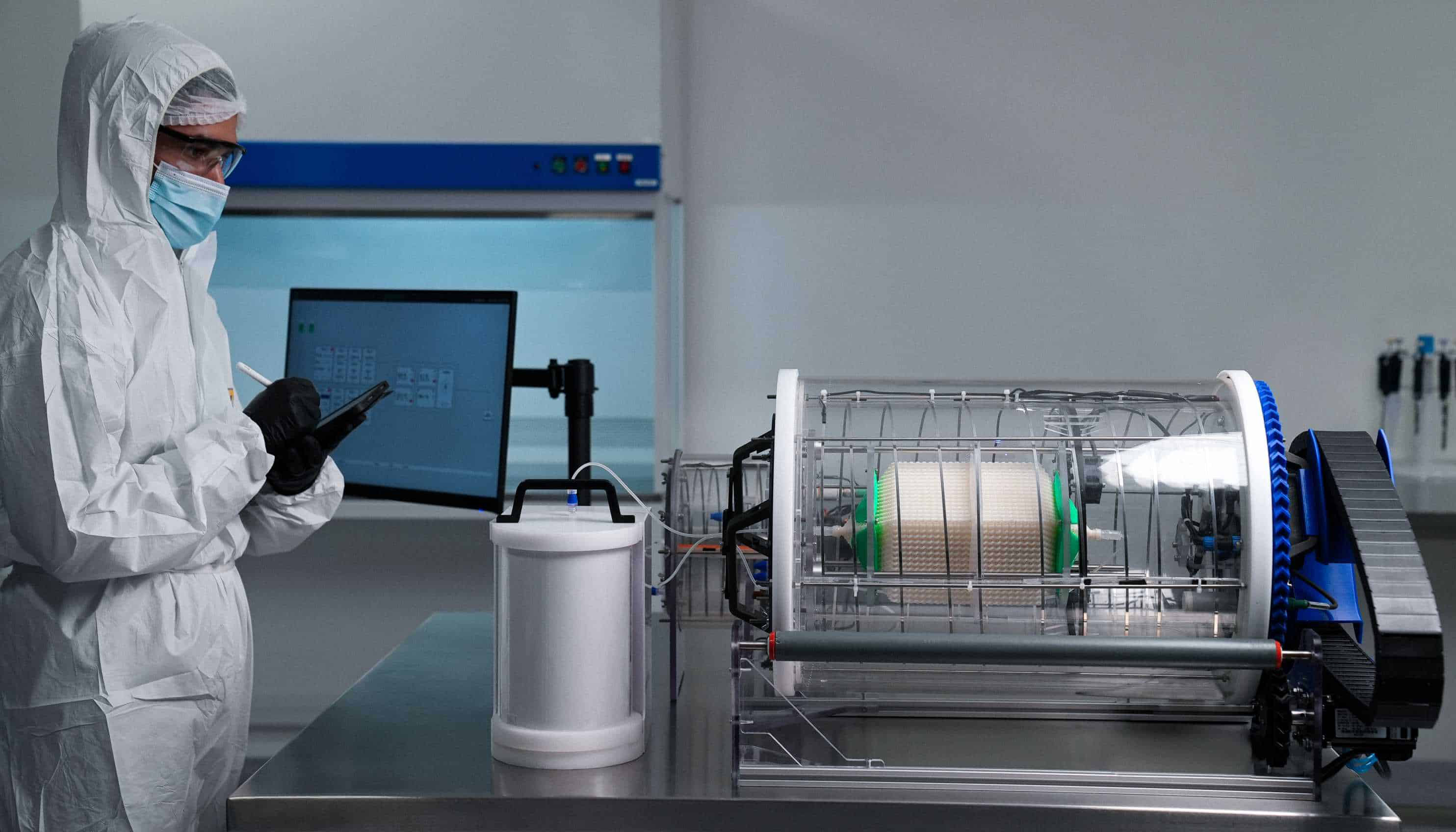
Stämm Biotech
Scaling up is often seen as the holy grail of commercializing cultivated meat. But Juan Martín Cabaleiro, CTO at Argentine biotech firm, Stämm Biotech, believes the sector may be viewing it the wrong way. “The idea is not to make larger and larger suspension bioreactors,” he says, “but to decentralize production into continuous bioreactors that are right-sized for each site.”

This challenge to convention defines Stämm’s approach. Instead of scaling with massive tanks and complex systems, the company has developed a modular, precision-focused biomanufacturing platform. Its 3D-printed Bioprocessor creates optimal cell growth environments via a cartridge-based bioreactor made from gas-permeable, biocompatible materials. Gentle, efficient, and customizable, it rethinks how biology is scaled – not just how much.
“We’ve already seen strong results in monoclonal antibody production,” Cabaleiro adds. “But any biomass-based process could benefit from our low-shear, high-performance setup.”
Rethinking the reactor
Cultivated meat is a natural next step. Stämm’s pilot partnership with Israeli firm SuperMeat is the first of several that could test its theory at scale – without falling into the trap of traditional fed-batch models. These batch-based systems, inherited from biopharma, are often over-engineered and inefficient for food. Stirred-tank reactors (STRs), for example, offer the control required for pharmaceutical-grade precision but struggle with cost and energy demands when applied to large-volume, low-margin food applications.
“They’re not built for structured meat,” says Cabaleiro. “Muscle and fat cells need different conditions to differentiate, and turbulence or shear stress can compromise that process.”
At the other end of the spectrum are the blunt instruments of food fermentation: massive tanks used to make beer or cheese. These are simple and scalable, but lack the nuance needed to maintain healthy, differentiated animal cells.
Stämm’s solution is neither – and both. Its Bioprocessor uses a gyroid-inspired, biomimetic internal architecture to deliver nutrients and gas evenly, avoiding the turbulence, foaming agents, and sparging systems that conventional reactors depend on. The result: no agitators, no bubbles, and significantly lower cell stress.
“By avoiding turbulent mixing, we reduce the need for additives and lower media consumption,” Cabaleiro explains. “That translates into both lower costs and better product quality.”
Continuous processing is a cornerstone of Stämm’s approach. Instead of batch runs punctuated by downtime, the system allows for extended operation, improved equipment utilization, and fewer operators. “A lower infrastructure footprint also means smaller rooms with lower monthly costs,” he adds. “These flexible modular facilities could be constructed for a fraction of the cost – and quickly adapted to different cell lines.”
By avoiding turbulent mixing, we reduce the need for additives and lower media consumption
But continuous systems are not plug-and-play. They demand robust, genetically stable cell lines and real-time process monitoring. “You need inline control of pH, gases, metabolites, and cell density,” Cabaleiro notes. “And you have to manage cell retention and harvesting efficiently without compromising viability.”
It’s not just a technical puzzle. It’s a cultural one, too. Many cultivated meat companies still gravitate toward fed-batch because it’s familiar – or what existing CDMOs can support. But Cabaleiro sees that changing. “Core innovations in the biomanufacturing equipment space, such as Stämm bioreactor technology, have the potential to address fundamental barriers to product commercialization,” he says.
Stämm isn’t aiming to be a CDMO. Instead, it positions itself as a partner to help cultivated meat firms deploy modular manufacturing units aligned with their scaleup goals. “Whether companies build in-house or outsource, they need a scalable solution,” says Cabaleiro
Ultimately, it’s not about making bigger tanks. It’s about making smarter ones.

Multus, Roslin Technologies, & The Cultured Hub
“As the industry matures, we’re seeing the rise of specialist companies like the three of us here,” begins Cai Linton, Co-founder & CEO of Multus. “Roslin is focused on cells, Multus on media, and The Cultured Hub on bioprocessing. That kind of specialization allows us to go much deeper into each area than any single vertically integrated company could.”
This coordinated approach is helping drive down one of the most stubborn barriers in cultivated meat: cost. Rather than building every capability in-house, startups can now plug into a shared ecosystem that spans cell line development, growth media, and bioprocessing infrastructure – an end-to-end service that slashes timelines
and capital expenditure.
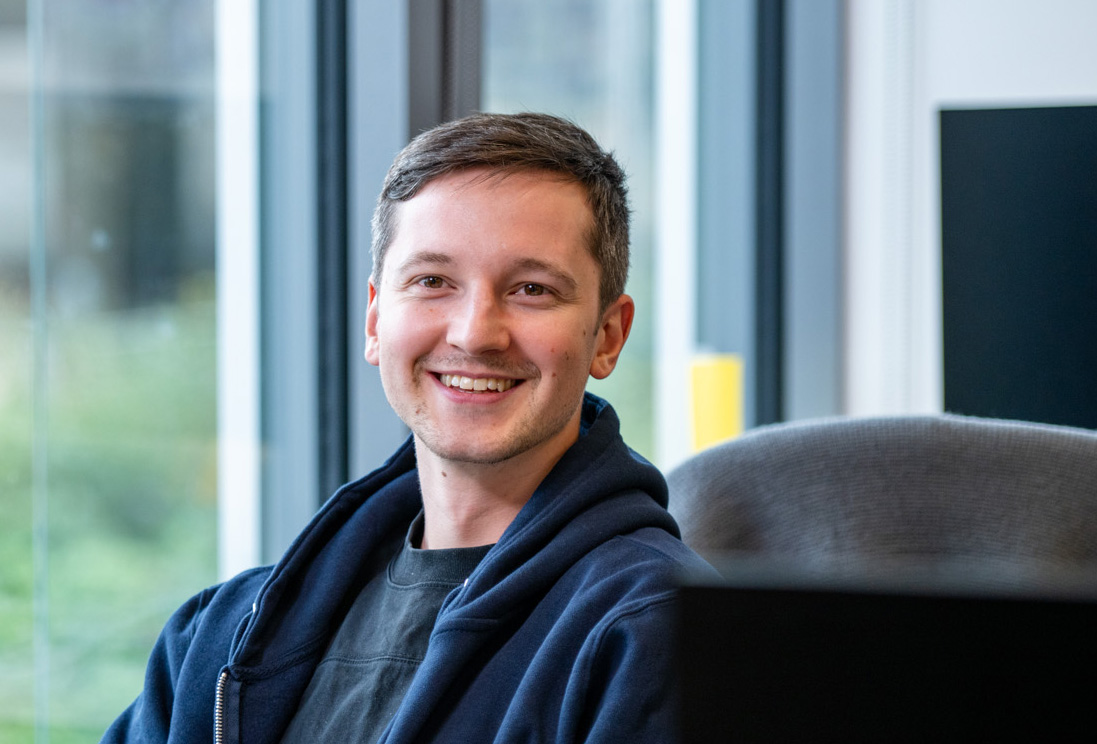
“In the early days, vertical integration was a necessity,” says Linton. “But it’s taken a lot of time and capital. This model helps producers move faster and build better products sooner.”
Roslin’s CEO, Ernst van Orsouw, agrees. “We had companies asking for biomass to test cultivated meat concepts, but they weren’t equipped to manage cell lines. That’s where the partnership comes in – offering an integrated, de-risked route to commercialization.”
Scaling together
The collaboration began with a joint grant from Innovate UK and Innosuisse to scale up Roslin’s cell lines at The Cultured Hub’s facility. Multus soon joined, providing tailored media formulations. “It’s been a step-change,” says Yannick Jones, CEO of The Cultured Hub. “We’re combining deep expertise to develop not just the tech – but the market itself.”
Reducing cost means solving for complexity. “Say we want to produce 1kg of biomass,” continues Van Orsouw. “The growing might take 10 days, but when you add facility booking, media sourcing, permits, and logistics, it stretches to months. Working together allows us to manage the supply chain from end to end.”
That level of coordination depends on seamless technology transfer and shared standards. “When we transfer our cells, we also hand over protocols and training,” Van Orsouw adds. “We’ve invested in ISO 22000 certification to assure partners everything we ship meets food safety and quality standards.”
Multus brings a similar mindset. “Our FSSC 22000 certification means rigorous documentation and compliance protocols across our media manufacturing process,” notes Linton. “We operate to food industry standards because that’s what’s needed for cultivated meat to scale.”
All three companies stress that documentation, clear communication, and alignment are critical. “It’s not just technical,” Jones adds. “It’s logistics, planning, and supply coordination. When a shipment leaves a facility, we need to know where it is, that the cold chain is intact, and that the receiving team is fully prepped.”
And it’s that end-to-end readiness that makes the model scalable. “This is how you create a predictable, lower-risk path for early-stage companies,” says Jones. “They can focus on innovation while relying on experienced partners to handle the rest.”
Rather than investing millions in infrastructure, companies can access what we’ve already built. That lowers barriers and speeds up development
Linton emphasizes the capital advantage. “Rather than investing millions in infrastructure, companies can access what we’ve already built. That lowers barriers and speeds up development.”
For van Orsouw, it’s also about leveraging the strengths of each partner. “Our team of 20 scientists is focused entirely on cell line development. That kind of specialization is rare – and powerful. We’ve seen it in adjacent sectors such as crop genetics. Cultivated meat will follow the same path.”
So, could this become a plug-and-play model for the wider industry? “That’s exactly what The Cultured Hub is built for,” says Jones. “A facility where companies can drop in, scaleup, and get to market faster – with far less CapEx.”
Ultimately, the collaboration offers a clear path forward in a field still burdened by high costs and technical complexity. “Start early,” Linton advises. “Find aligned partners, communicate openly, and don’t try to do everything yourself. Collaboration is how we bring cultivated meat to scale.”
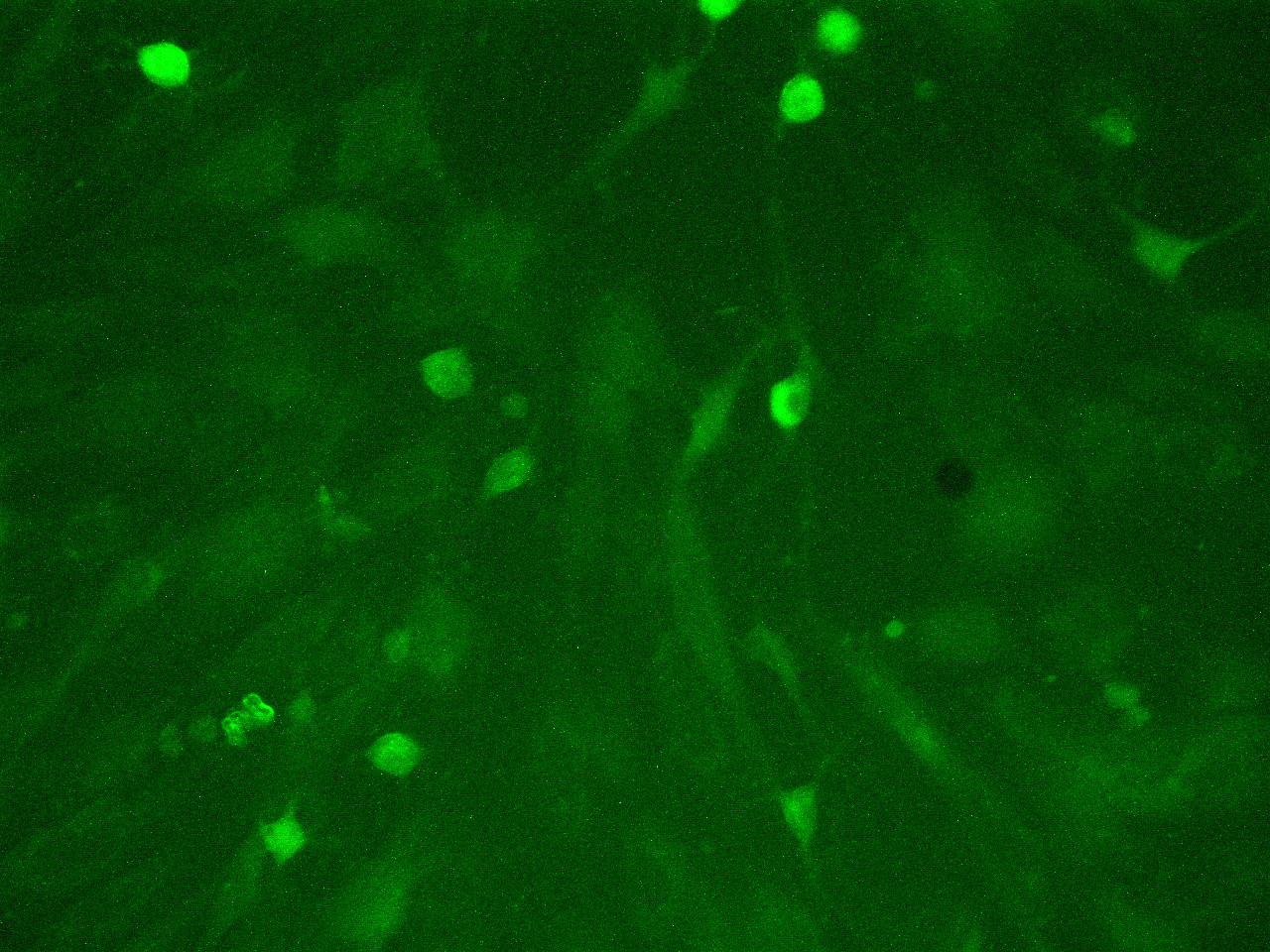
Livestock Labs
“Unless we use genetic engineering to give cells the traits they actually need, there is no cultivated meat industry where the unit economics work at scale,” believes Steen Ooi, Founder, CEO & CSO of Livestock Labs. His company develops production-ready cell lines to cut costs and speed up commercialization.
Most cultivated meat firms rely on primary cell lines that are only occasionally production-capable. “Current lines may have a few useful traits,” says Andrew Sayles, Co-founder & COO, “but disrupting a 10,000-year-old industry requires cells with dozens of engineered phenotypes for performance, scalability, and regulation.”

Livestock Labs designs cells for industrial use from day one – faster growth, simpler media, and regulatory alignment. This can save companies up to two years of R&D and cut development costs by 95%.
“Our cells come pre-engineered with traits like immortalization and reduced media needs,” says Ooi, while Sayles adds, “Today’s cells can’t handle commercial scale. We stack traits to help them thrive at scale, lowering costs and raising efficiency.”
Ooi’s work began at New Age Eats, where poor cell performance created major delays. “The cells couldn’t meet growth demands,” he says. He also questions why some companies avoid genetic engineering, given GM foods have been commonplace in the USA for decades.
Sayles, who helped scale Mission Barns, adds, “Vertically integrated companies had to do everything. Now, specialization is more efficient and accelerates progress.”
Developing production-ready cells takes years and significant investment. “By licensing our ready-to-use lines, companies can skip much of that,” insists Ooi. This lets startups focus on innovation instead of building in-house cell line teams.
Modular by design
Sayles foresees an industry shift. “The future is modular, with specialized providers handling cell lines, bioreactors, media, and scaffolds.” Ooi agrees, “We aim to be the core cell line provider so others can innovate around us, making the ecosystem more efficient and accessible.”
Media costs dominate production expenses, especially serum alternatives. Ooi reveals, “We can engineer cells to produce growth factors themselves or mimic constant stimulation, drastically reducing media needs and cost.” Pilot collaborations help validate these savings at scale.
With the outsourcing of cell line development, companies will build teams focused on their unique strengths. Sayles explains, “IP stacking and collaboration will speed progress, enabling large food companies to license best-in-class tech for mass cultivation.”
Unless we use genetic engineering to give cells the traits they actually need, there is no cultivated meat industry where the unit economics work at scale
Livestock Labs is entering pilot phases with partners, with early enthusiasm tempered by industry caution. “Many want to outsource cell lines but need proof they perform,” says Ooi.
He predicts, “In three to five years, the industry will move away from vertical integration to specialized supply chains, reducing costs and unlocking innovation: we already see this happening.” Sayles adds, “This democratizes cultivated meat, lowering barriers to entry, encouraging growth, and spurring innovation.”
Ooi concludes, “Our goal is to be the standard cell line platform, enabling companies of all sizes to grow reliably and at scale.” Sayles agrees, “Success means open collaboration, combining the best technologies to bring affordable, high-quality cultivated meat to consumers.”
If reducing costs and speeding scale are priorities, Livestock Labs’ engineered cells may be the catalyst the cultivated meat industry needs.

The Good Food Institute
“The narrative around cultivated meat scaleup is often more pessimistic than reality,” believes Elliot Swartz, Senior Principal Scientist at The Good Food Institute (GFI). “Regulatory approval is the real gatekeeper before companies can demonstrate large-scale production.”
Swartz has spent seven years in the cultivated meat sector, combining stem cell biology expertise with a focus on sustainable food solutions. At GFI, he tackles technical and economic challenges, from amino acid supply chains to production cost and sustainability modeling.
One key insight from his recent work involves amino acid costs, a vital media component long seen as prohibitively expensive. “Earlier models estimated US$50-US$150/kg, but actual quotes are closer to US$10-$50/kg,” he says. The gap stems from reliance on pharma-grade pricing, while cultivated meat now uses more affordable food-grade inputs.
This recalibration also shines a light on the importance of feedstock efficiency. “It’s not just what you put into the media – it’s how well the cells convert those inputs into biomass. Feed conversion ratios are essential to understanding true media cost per kilogram of cultivated meat,” he explains.
Swartz points to some of the lowest published media costs from industry players such as Believer Meats, which reported about 63 cents per liter, and others nearing 10-20 cents per liter.
“While published data remain limited – and much of it unpublished by companies internally – there is clear progress. As production scales, raw material costs will continue to fall,” he predicts.
Much of the current skepticism around scaling cultivated meat hinges on companies’ lack of commercial-scale operations. Swartz argues this is largely because regulatory approval remains the primary hurdle.
Openly sharing successes and failures accelerates innovation. Companies like Believer Meats and Mosa Meat have made tremendous impact by publishing their learnings
“Regulatory green lights are a prerequisite for scaling. We’re just starting to see companies such as Vow ramping from zero to 20,000 liters post-approval – showing the industry’s capacity for rapid scale once permitted,” Swartz says. Vow’s trajectory, fueled by under US$60 million in investment, offers a blueprint for others. Yet, questions remain about maintaining continuous operation and preventing contamination over long production runs, especially outside pharma-grade cleanrooms.
Swartz notes, “The industry is gravitating toward facilities more akin to breweries or conventional food production, which pose different challenges than pharmaceutical clean rooms, but initial results are promising.”
Swartz also underscores the vital role of innovation across three pillars: cell lines, media formulation, and bioprocess engineering. “No single vertically integrated company can master all three. That’s why we’re seeing growing importance in specialized B2B providers and academia driving foundational breakthroughs.”
Cost innovation is also extending to equipment, where companies such as Vow have cut bioreactor costs by 80% through custom control software and stripped-down designs.
“There’s a clear trend of moving away from expensive pharma-grade gear to lean, fit-for-purpose equipment,” Swartz observes, although he notes the need for more real-world validation.
Bridging science and stakeholders
GFI plays a crucial role not only in scientific research but in communicating findings to policymakers, investors, and the broader industry. “We translate scientific insights into tailored messaging for different audiences – from regulatory bodies to corporate investors – to ensure everyone has accurate, updated information,” Swartz explains.
He stresses the importance of transparency in a sector where many companies guard proprietary data. “Openly sharing successes and failures accelerates innovation. Companies like Believer Meats and Mosa Meat have made tremendous impact by publishing their learnings.”
Swartz has also had firsthand experience tasting cultivated meat products, describing their aroma and texture as strikingly authentic. “The aroma triggers innate recognition in the brain. The product I tried had a three-dimensional structure with the bite and chewiness of chicken. It’s indistinguishable from conventional
meat,” he says.
Reflecting on the industry’s evolution, Swartz invokes Amara’s Law, noting that initial hype has given way to a more measured ‘slope of enlightenment’ phase.
“The next decade will be about scaling and refining costs – from media and cell lines to bioprocess and equipment – and seeing how cultivated meat fits into the broader market.”
He also predicts a future where cultivated meat companies will collaborate with traditional meat producers – licensing technology or integrating into existing supply chains – while some pursue direct-to-consumer branded products.
Swartz’s final message to the cultivated meat community is clear. “Building a solid knowledge foundation and sharing what works are the most critical levers for cost reduction and commercialization success.”
As this transformative technology marches toward the mainstream, its pace of innovation will depend heavily on openness, shared learning, and collaboration across scientific, commercial, and regulatory sectors.
“Cultivated meat is one of the most transformational food technologies we’re likely to see in our lifetime,” Swartz concludes. “The more we share knowledge, the faster we all get there.”
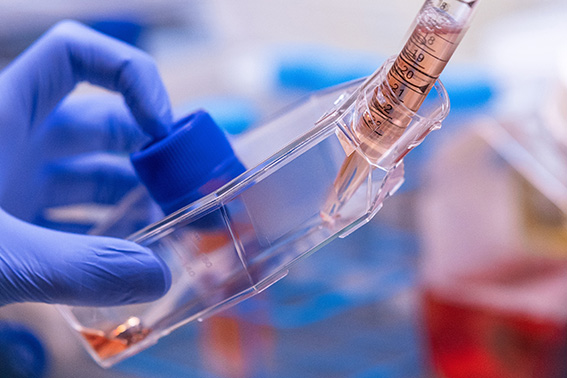
Mewery
In the global race to make cultivated meat affordable, Roman Lauš is taking an unexpected detour: microalgae. As CEO and founder of Czech startup Mewery, Lauš isn’t chasing the next bioreactor breakthrough or relying on ultra-purified growth media. Instead, his team is co-culturing animal cells with microalgae in a radical rethink of how cultivated meat is grown – and how it might one day be priced competitively with conventional meat.
“This isn’t about mimicking steak,” Lauš says. “It’s about building an entirely new category of food – one that’s not just more ethical, but more efficient and eventually, more nutritious.”

At first glance, combining mammalian cells and microalgae sounds like a scientific side quest. But Mewery has turned it into a strategy for cost reduction.
“In traditional cultivated meat, you’re feeding cells expensive nutrients, growth factors, and recombinant proteins,” Lauš explains. “Our approach flips that: the microalgae act as living microcarriers and contribute their own nutrients. It’s not a workaround – it’s a biological upgrade.”
That upgrade plays out on several fronts. Mewery’s microalgae strains produce recombinant proteins and growth factors in their regular sequences, meaning the startup doesn’t need to source them externally. Even better, the co-culture system allows for medium recycling: once the porcine cells have done their part, the same medium is reused for microalgae growth. As Lauš puts it, “That’s a circular economy in a flask.”
At lab scale, Mewery reports a 77% cost reduction compared to traditional monoculture systems. At projected commercial scale, that still holds at around 71% – a figure that could shift the economics of the entire industry.
For Lauš, hitting parity with conventional pork is just step one. “When we can grow porcine cells at a fraction of the cost, the game changes,” he says. “We’re no longer trying to replicate meat. We can reinvent it – design foods with better nutrition, better sustainability, and better economics.”
Already, Mewery’s edible aggregates – clumps of animal and microalgae cells – outperform standard systems in terms of density (100g/L compared to the industry’s 60g/L). That means more product per bioreactor, and fewer resources needed per kilo of biomass.
What’s more, those aggregates are porous, oxygenated by photosynthesis, and rich in proteins, vitamins, and healthier fats or fatty acids – thanks again to the microalgae. “In the end, we’re not adding complexity,” Lauš argues. “We’re simplifying biology by designing a cooperative system. The cells help each other grow.”
Rethinking growth factors and FBS
One of the most expensive pain points in cultivated meat is growth factors. Mewery sidesteps that by using microalgae as mini biofactories.
Our cells don’t need luxury treatment – they need a system that works with them, not against them
“We’ve engineered microalgae strains that produce recombinant proteins directly – no purification, no extra processing,” Lauš says. “And we use them continuously in culture, which cuts complexity and cost even further.”
The company also claims over 90% cost reduction in fetal bovine serum (FBS) replacement, thanks to a proprietary microalgae-based alternative. “FBS was never scalable,” he adds. “Replacing it is not just possible – it’s necessary.”
Over the next 18 months, Mewery plans to scale up to pilot production, finalize proprietary microalgae strains for flavor and nutrition, and prepare for regulatory submission. A custom-designed photobioreactor is already in the works, tailored to the co-culture process and expected to enter testing by late 2025.
“We’re not in a race to be first,” Lauš says. “We’re building a platform that can last – economically, environmentally, and scientifically.”
In an industry still dominated by pharma-grade inputs and monoculture logic, Mewery’s hybrid model stands out. It’s not just cheaper. It’s smarter.
“Our cells don’t need luxury treatment,” Lauš says. “They need a system that works with them, not against them. And that’s what we’re building."
If you have any questions or would like to get in touch with us, please email info@futureofproteinproduction.com







